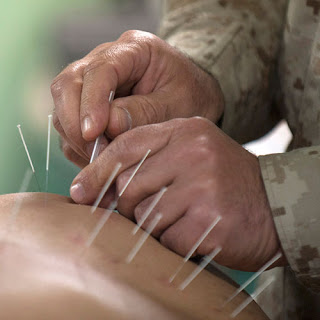Acupuncture Needling Techniques: Acupuncture Triggering Using Traditional Chinese Techniques
Centuries back Ling Shu-- also referred to as "Miraculous Pivot", which is the earliest book ever discussed acupuncture, carefully declared that for every single needling, the trick is above all to not ignore the rooting in the souls and well-being. To satisfy your needs and at the same time to not interfere with the organism goes all the method to the conception of the client's presence, to the place where the thoughts and well-being come from.
Chinese acupuncture is an established alternative treatment procedure used to boost fitness and health in a natural and natural way. The approach consists of the deep insertion of great needles to cause Qi-- the essential energy source which is accountable for total human health.
The fine needles are injected at strategic body parts, which are referred to as Acupoints. During the process, an acupuncturist inserts a sterile needle into the skin layers and takes it out when Qi arrives at the area. In Chinese acupuncture treatment, the oft-used needle size is 1.5 in (40 mm) in length and girth.
Given that the needles are long, fine, and delicate; stable and professional hand controls are required to make sure the needles place effortlessly and accurately into the pores with minimal irritation or discomfort. Skillful acupuncturists can insert and getting rid of the needles quickly, and likewise twirling or twisting the needles flexibly. They are also needed to implement needle technique by themselves bodies as a method to comprehend the specific experience of adjustment and stimulation that the user gets.
Based on the physiological aspects of the Acupoints, needle insertion method can differ. Conventionally, the needle is placed using both hands. In one hand, practitioners hold the needle in between 15 degrees to 90 degrees to the skin layer. They even use their fingertips to press, hold-up, or extend the surrounding skin location surface area to direct the needle to be inserted in appropriate rapidity, pressure, intensity, and area. A needling guide tube is utilized. The needle is put through the incision into television and inserted securely on the place; therapists then tap greatly on the management of the needle to let it penetrate the tissues of the skin. The guide is then removed, and the needle is more straightened as required. There are different of processes to generate either "tonification" or sedation some tend to be more simple than others, nevertheless, they are all essential. After the needle is placed, doctors will try to find the look of needling sensation called the "arrival of qi." The client may possibly experience a dull hurting, heaviness, distention, stinging, or electrical experience either around the needle or move up or down the afflicted meridian. This needling experience differs significantly from individual to person. Traditional Chinese medicine focuses on this feeling that might be affected by many causes, such as the intensity of the health problem, constitution of the patient, location of the acupoints and the needling techniques.
When again, techniques are carefully decided on according to the requirement of the client and the region of the Acupoints. General criteria to determine the needling techniques involve individuals who have tough physiques or ones with more well-built points can taking in needles much even more and can endure more vital strategies; while the elders, children and people with delicate body metabolism, and for those body regions with a thinner skin layer requires shallower needle insertions and be actuated more delicately. Although the above concepts of needle insertion, rotation, depth of penetration, withdrawing and so on are all conditions to take into account in conventional acupuncture treatment, many specialists around the globe disregard these rules while others hold them in high regard.

Nice Info.Thanks for sharing .You can go through the below for your dreams to come true in Coimbatore
ReplyDeletetransparent alignerspace brands
Very delighted to such valuable info.You can also get info from
ReplyDeletemidlineteeth
Great work.Thanks for sharing .You can reach below for
ReplyDeletedeepbite Teeth
Thanks for the blog.You can check
ReplyDeleteopenbiteteeth
Great Work.Keep doing.You can check
ReplyDeleteproclined teeth
Thanks for the blog.You can check
ReplyDeletePlan Misaligned Teeth
Great Blog.You can Check
ReplyDeleteTransparent Aligners
Beautiful blog.You can check
ReplyDeleteSmile Gallery
Very beautiful.You can check
ReplyDeleteContact
Awesome Blog.You can check
ReplyDeleteabnormal eruptionteeth